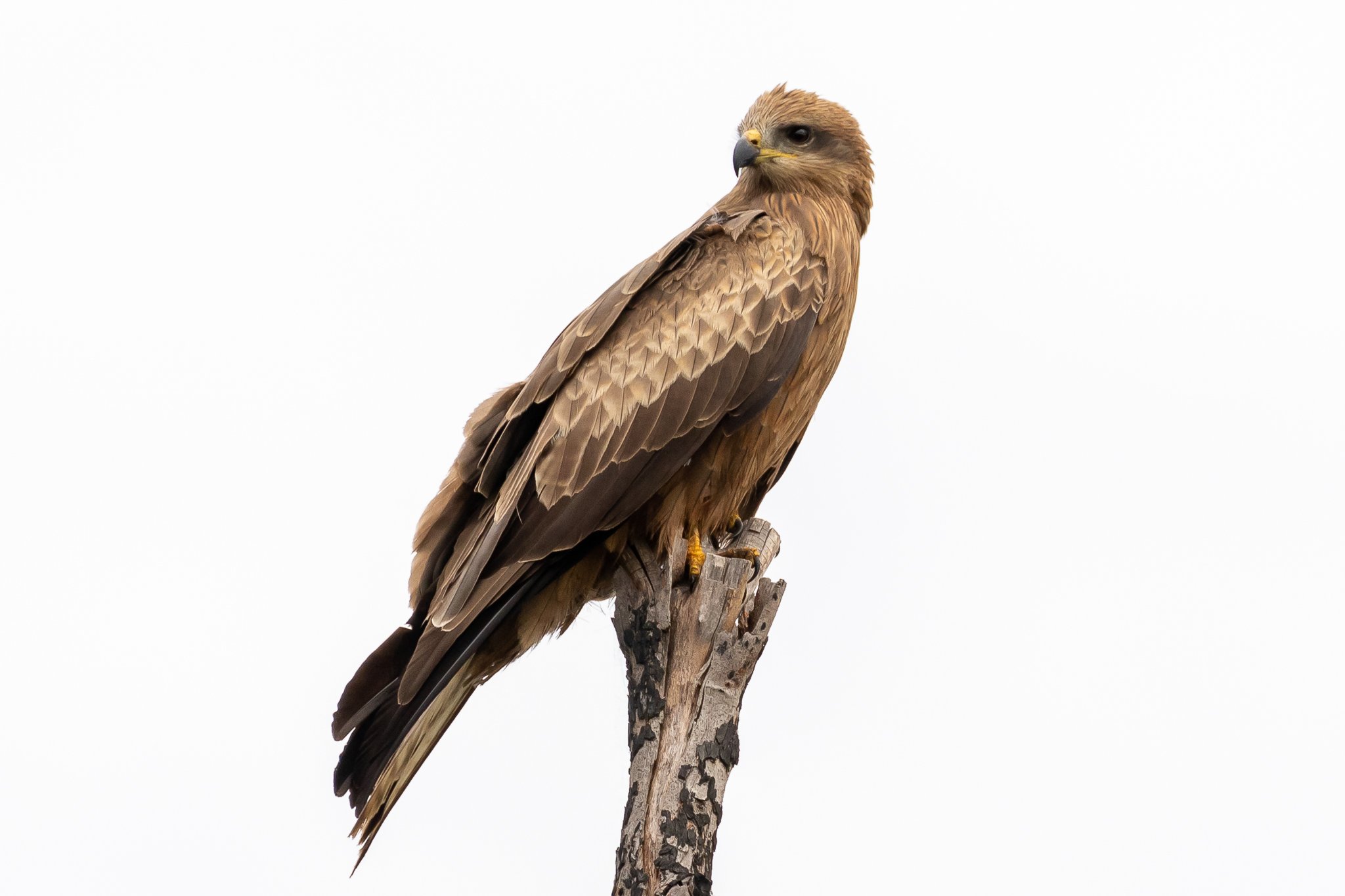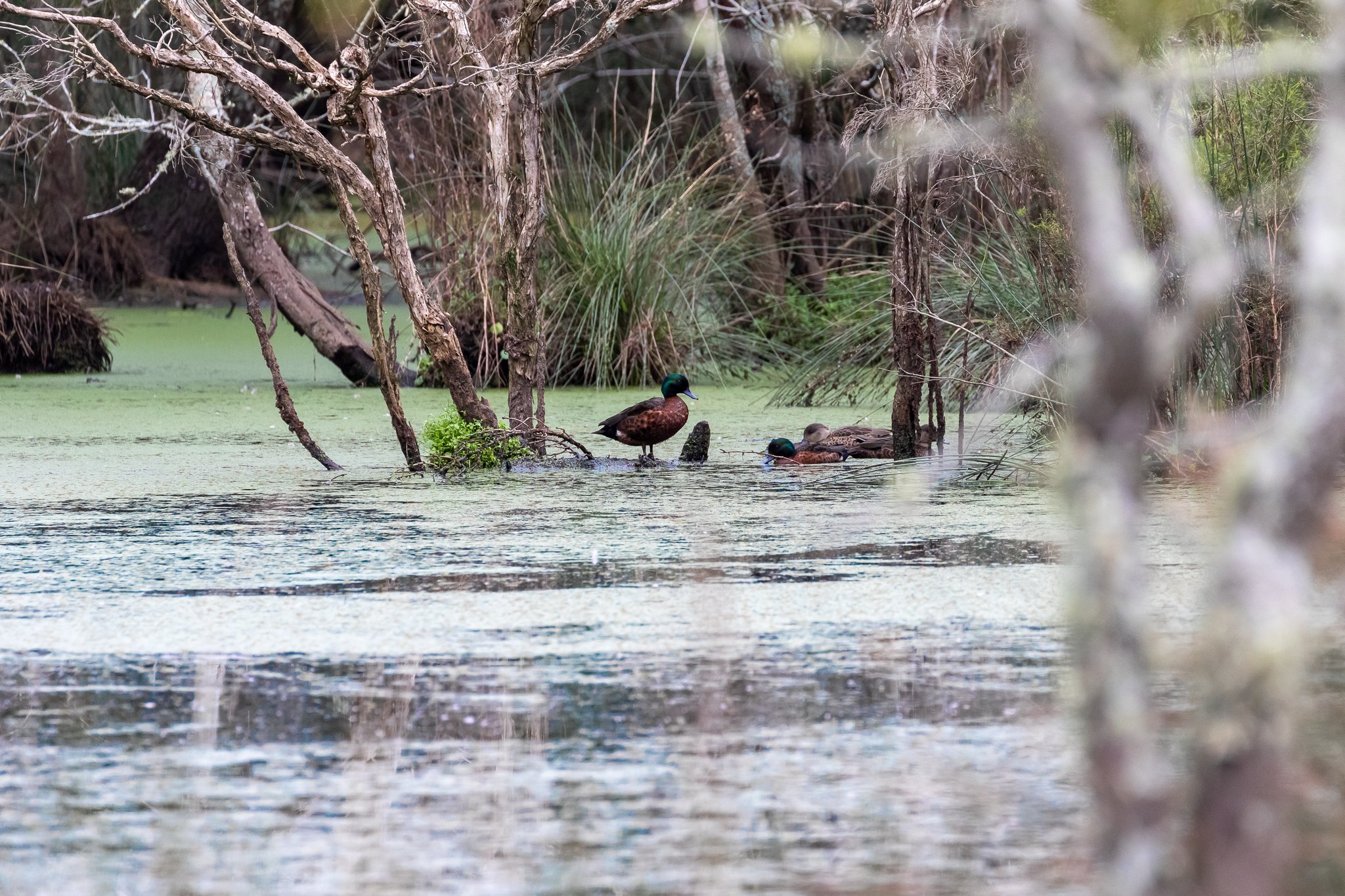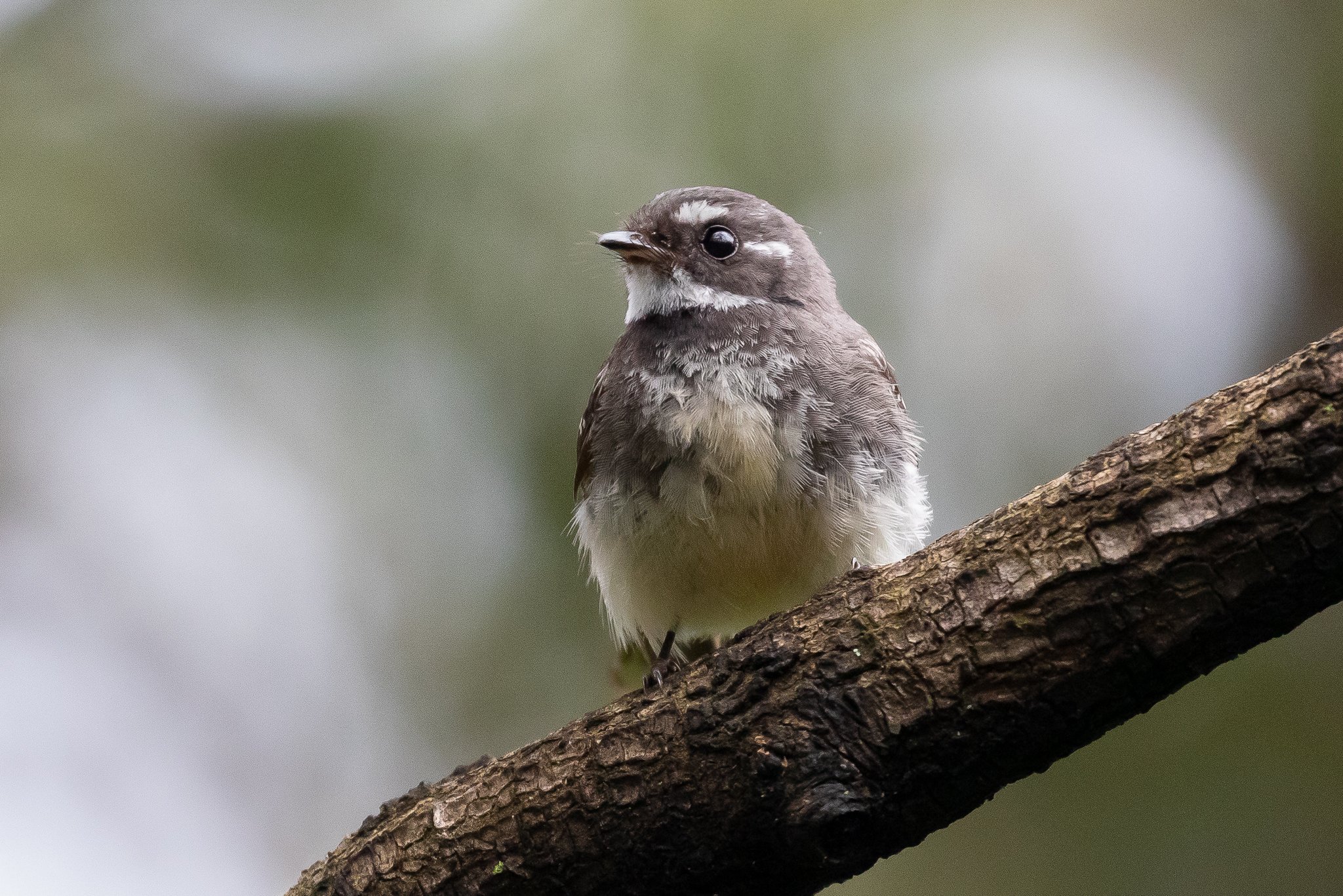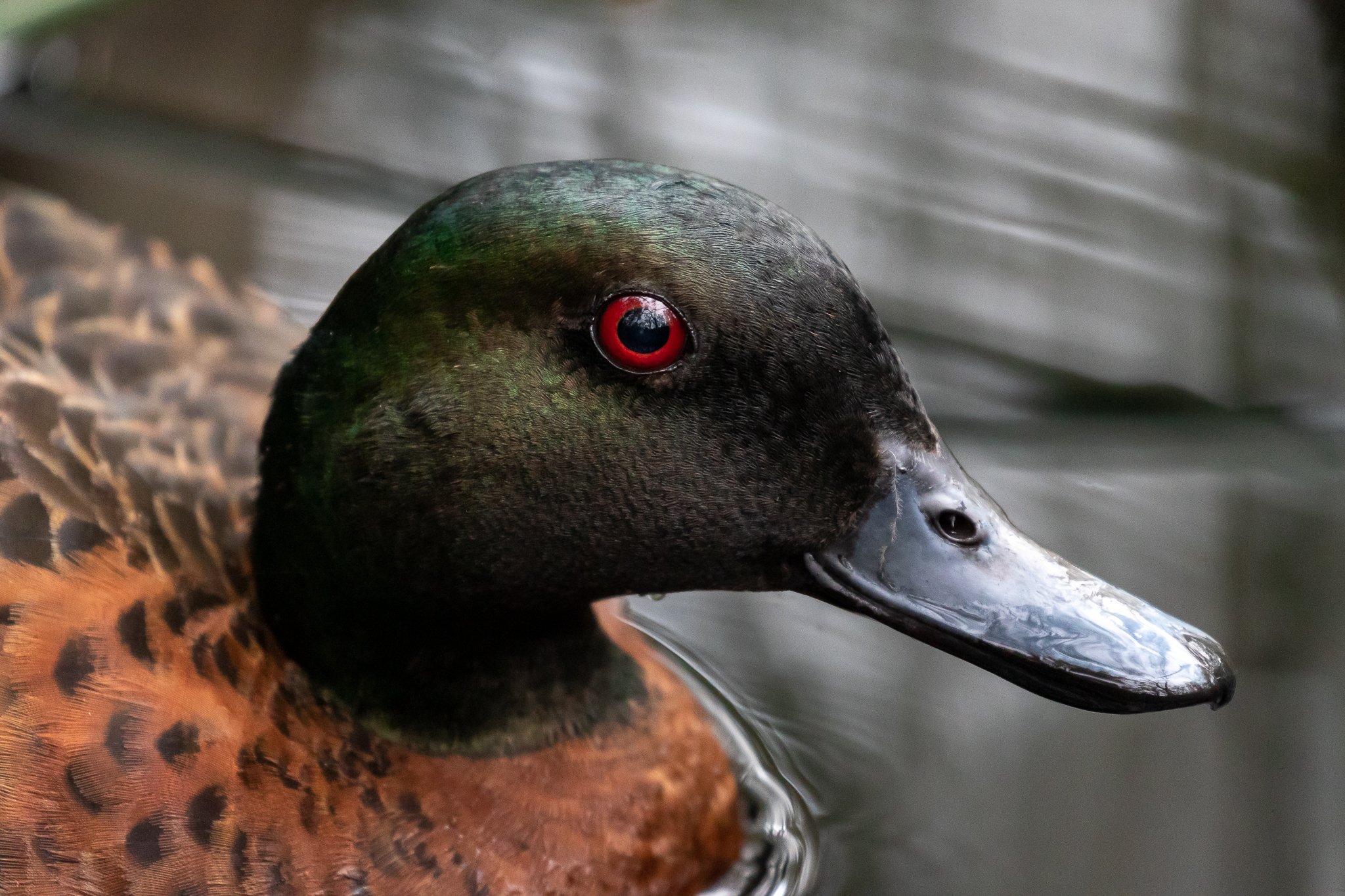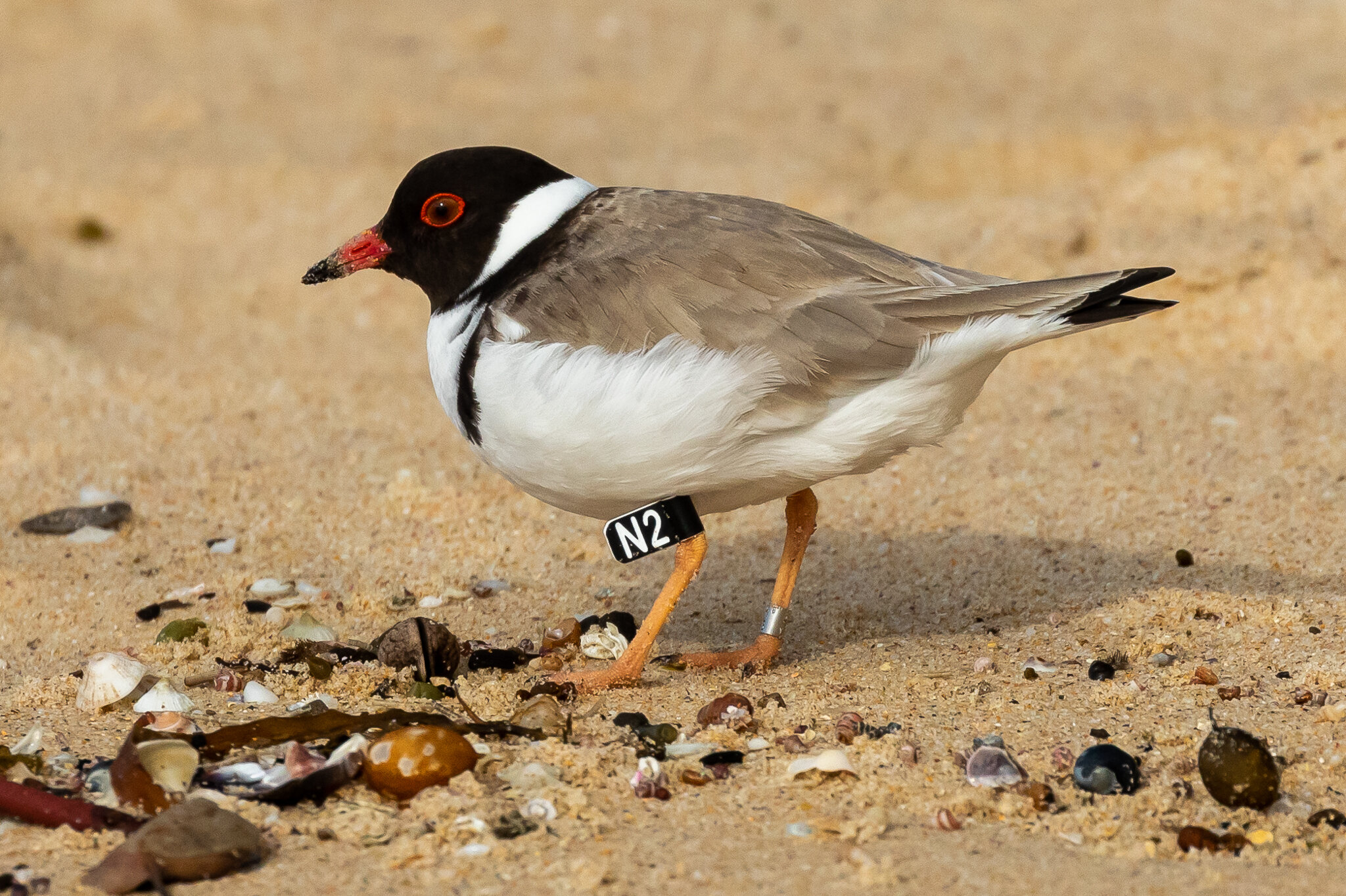Driving on the Princes Highway after a morning bird watching with the MUD birders group I saw this kite circling up ahead. It landed in an area of bush that had been burnt two years ago, in the huge Currowon bushfire. I pulled down a side road, grabbed the camera, and managed to get some distant shots. Then walked back to the highway and along inside the barricade around a long curve to get close for the picture below.
Expecting a Whistling Kite it was a surprise to see that this bird was a Black Kite, unusual in this area. There were no previous Birdata sightings showing around Lake Conjola for Black Kites and there have been only occasional sightings in the Shoalhaven. Having said that another Black Kite (the same bird?) was spotted some 24 km away at Bherwerre Beach in Booderee NP around the same time as my sighting, a first in that area for the experienced birders involved.
Black Kite photographed at Yatte Yatta near the Lake Conjola turn off on the Princes Highway, South Coast NSW.
